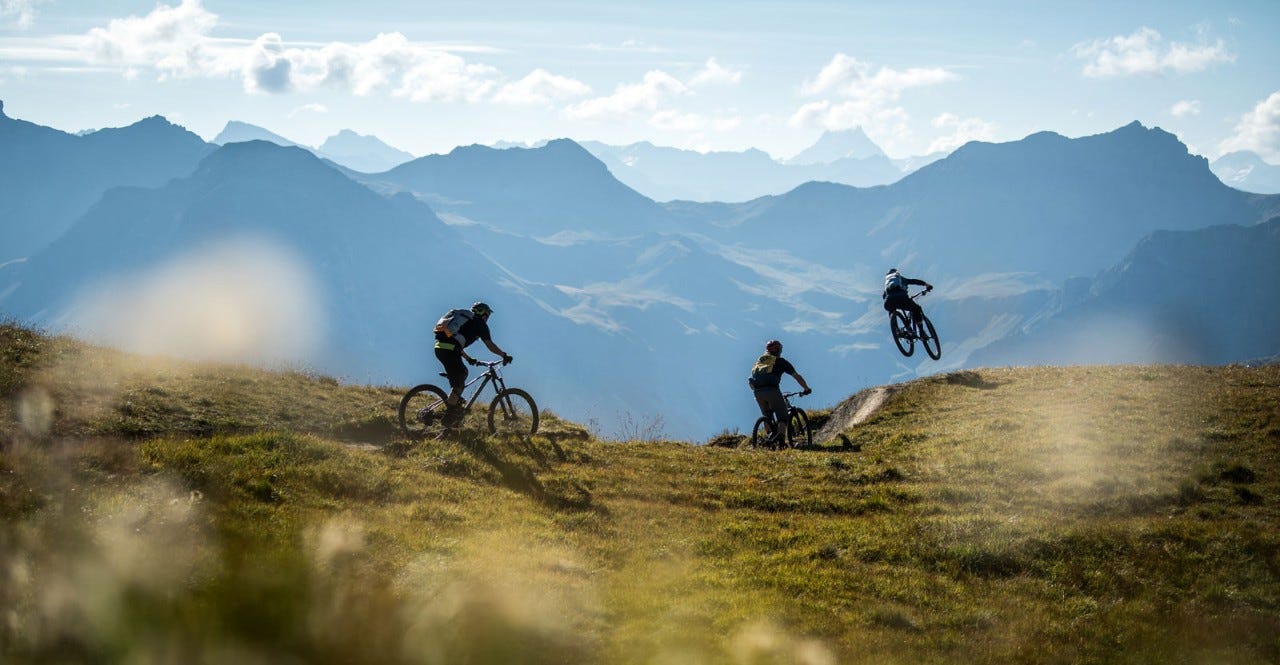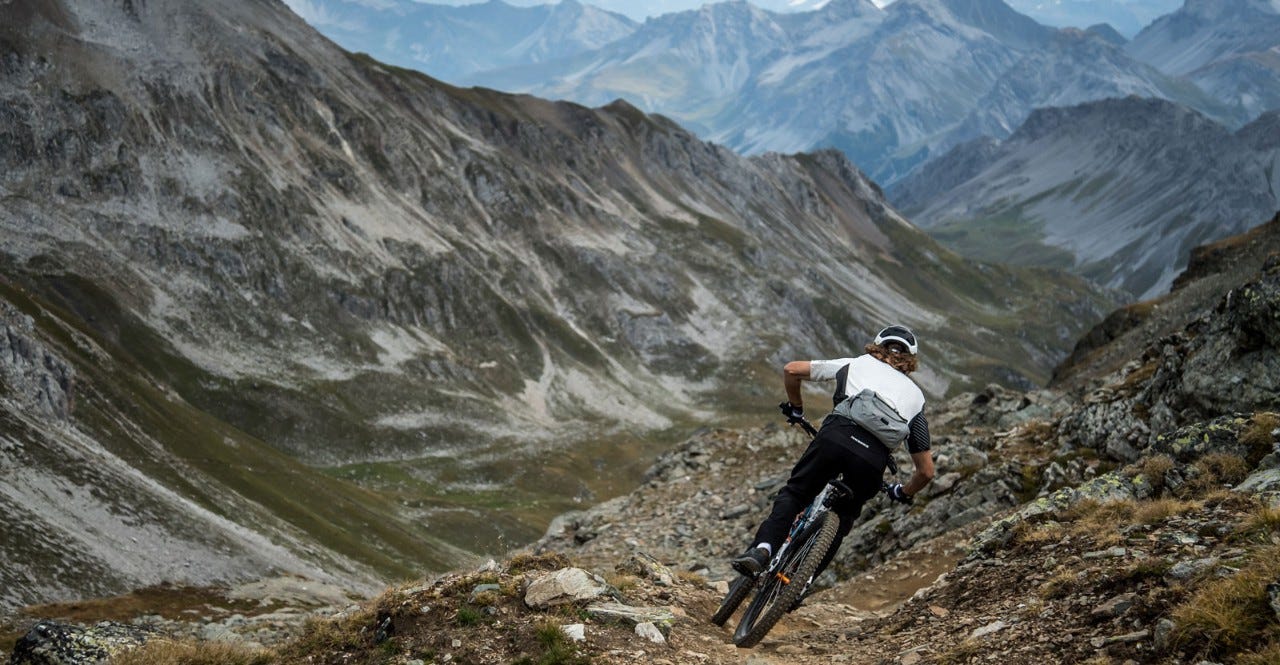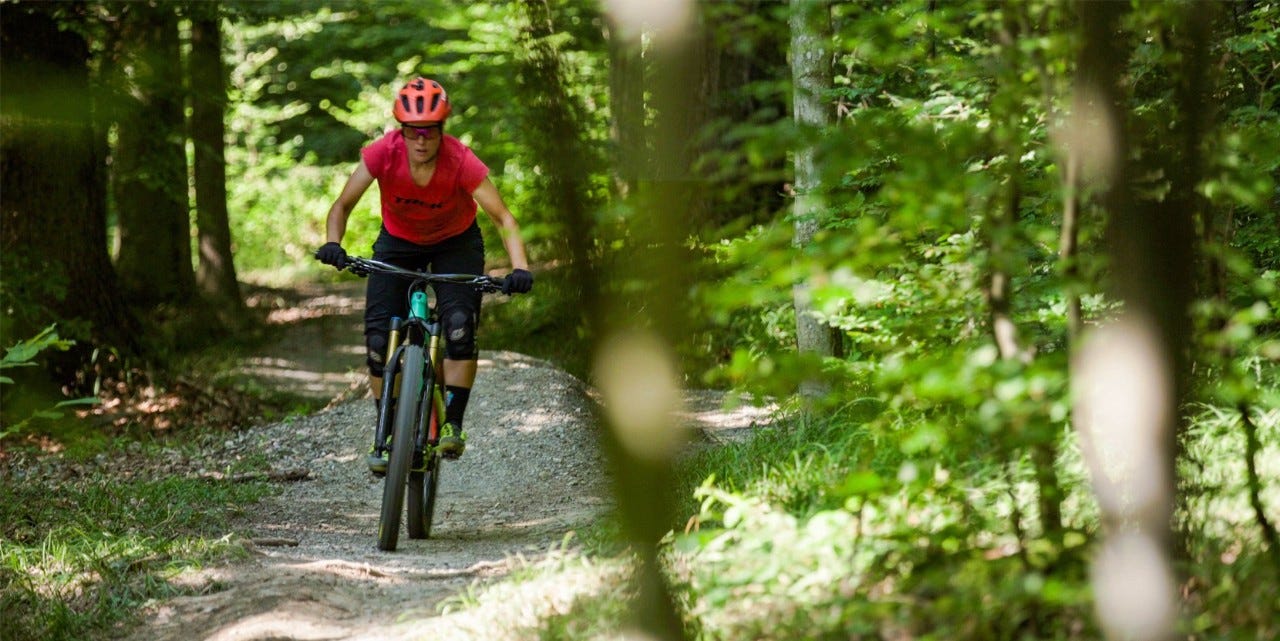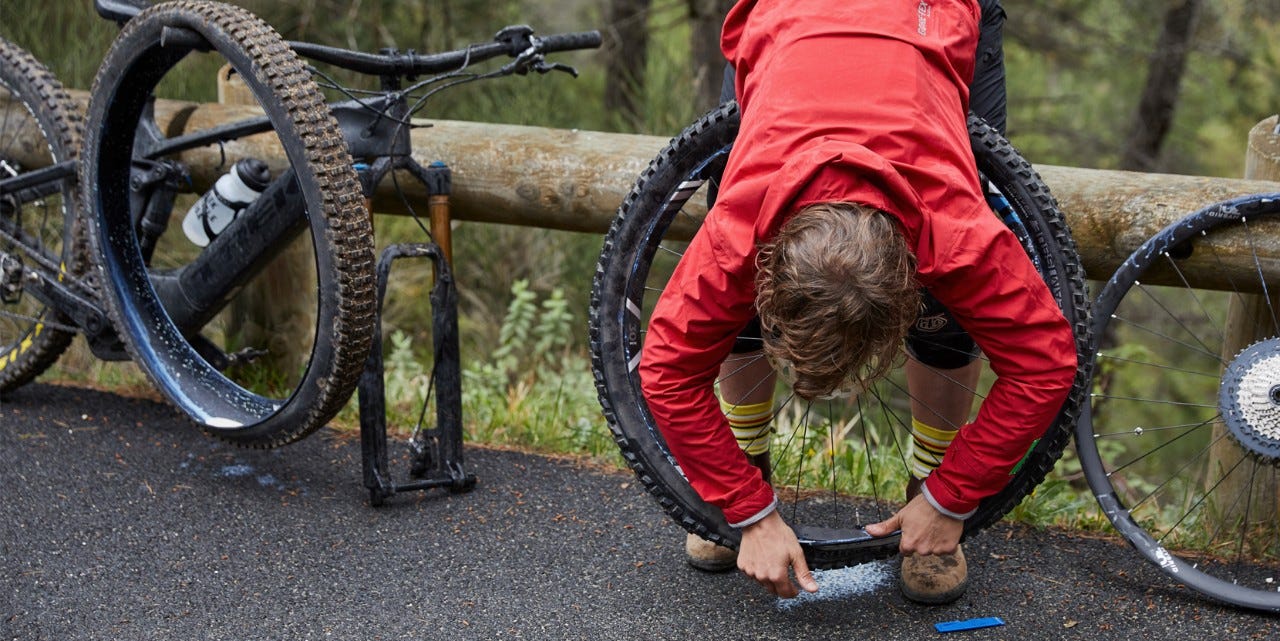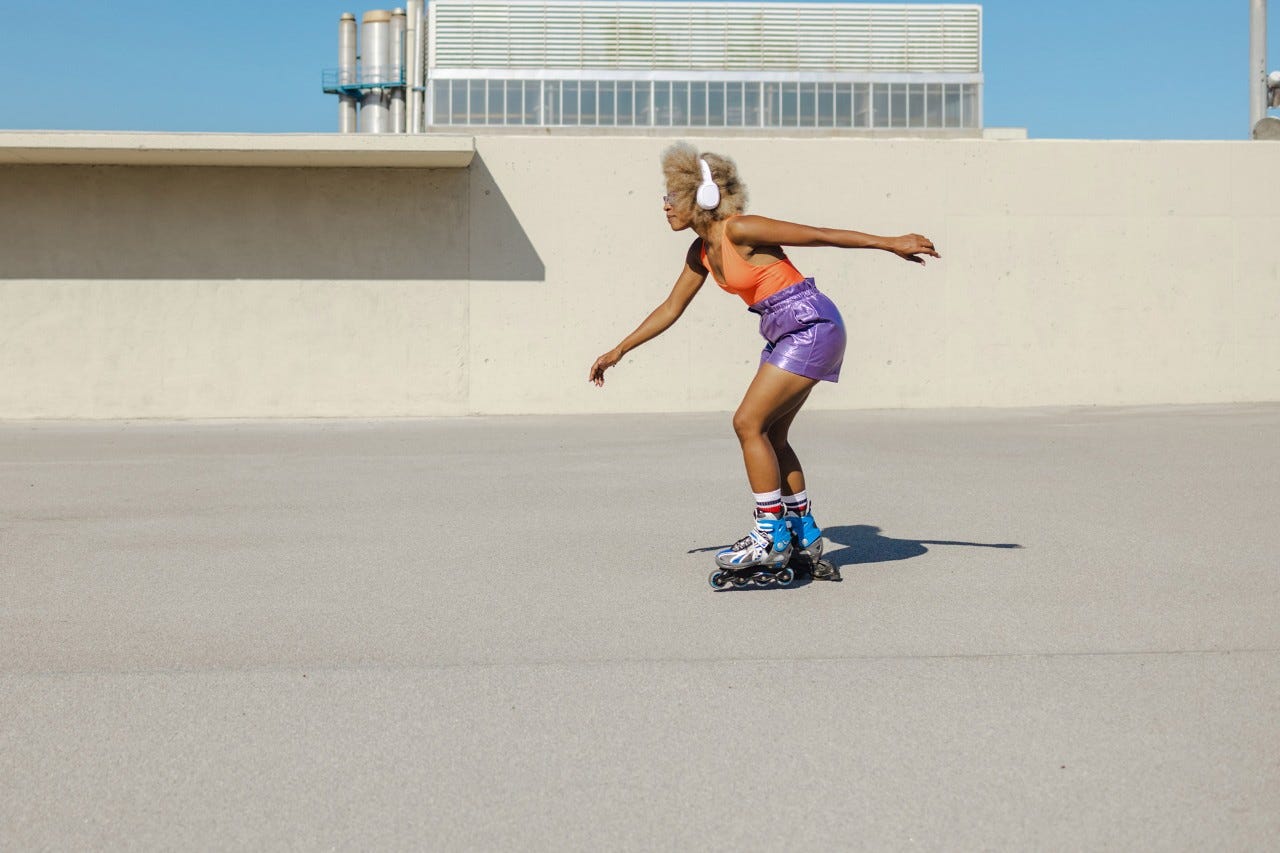Mountain biking tips for beginners
Riding for kilometres while enjoying breathtaking mountain scenery and getting a whole-body workout: Anyone who gives mountain biking a try is unlikely to stop.
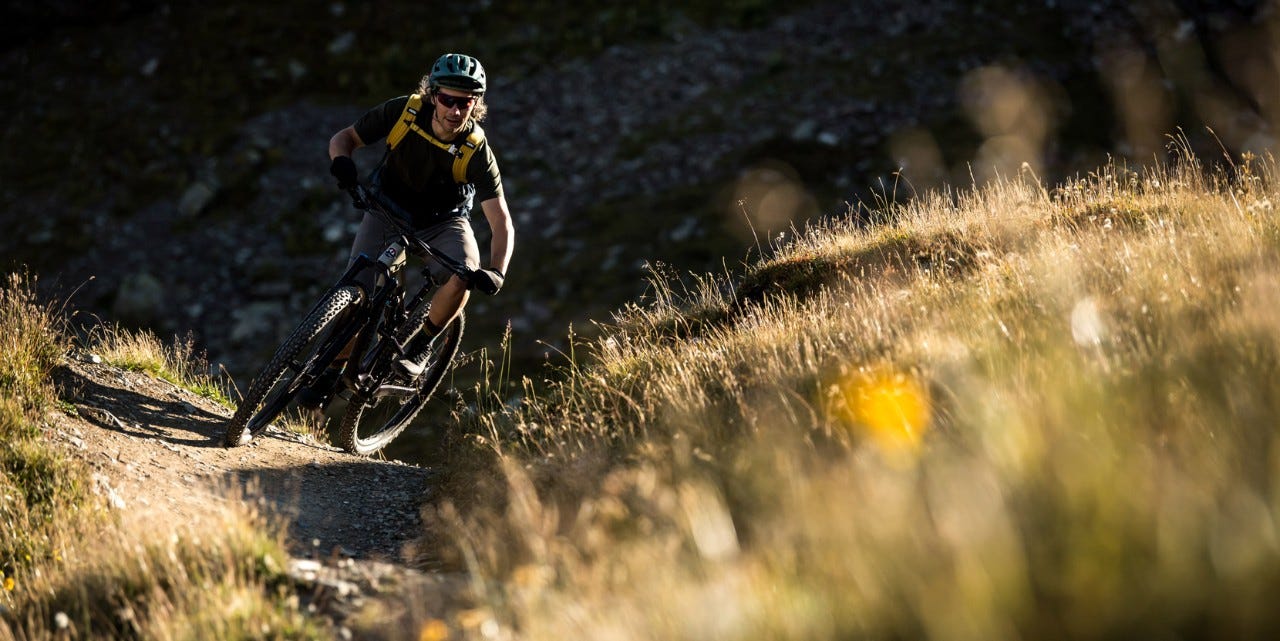
When you first start out mountain biking off-road, you’ll probably be a bit wobbly – and there will be tricky sections that you will find a real challenge. But remember: it’s the same for everyone. You’ll feel more secure the more you do it. Oliver Vogel, owner of the SWISSBIKEGUIDE bike school in Arosa, explains in the video what beginners need to know so that their first rides are safe and fun.
Video: Tips for beginners
Find the right bike
Before setting off, be sure to set up your bike properly. The size of the mountain bike depends on your height, while the shock absorbers and suspension are adjusted to suit your weight. It’s a good idea to have your mountain bike adjusted at a specialist bike shop.
It is also important to have your bike serviced regularly. Tip: in many regions you can rent mountain bikes. It’s a good idea to rent bikes before you buy your own. This way you can find out which model suits you best. Renting is also a good option if you only bike occasionally.
The right equipment
This includes a helmet, full-finger gloves, sunglasses and optional elbow and knee pads. Take plenty of water, your mobile phone, a first-aid kit and maybe an energy bar.
The weather can turn quickly, particularly in the mountains. So, check the weather forecast before you go and dress accordingly. If you’re doing an alpine tour, you should always take a rain jacket in your bag just in case, even if it’s sunny.
Plan your route
To start off, choose a trail that isn’t too difficult, long or steep. It will be more fun if you don’t have to constantly get off and push your bike and you will have enough energy to get through to the end. In many regions, you can go up the mountain by cable car or train, so you can focus on the descent.
Depending on the region, the trails are split into different levels of difficulty: either S0 (pretty easy) to S5 (professional) or Green/blue (easy), Red (moderate) and Black (difficult).
The right position
It’s important to find the right downhill position on your bike: if your weight is too far forward, you’ll tip over the handlebars, if it’s too far back, you’ll lose traction under the front wheel. Take a wide grip on your handlebars and bend your elbows similar to when you’re doing push-ups. Make sure your chin doesn’t extend over the handlebars. Place your feet on the middle of the pedals. Instead of sitting on the seat while going downhill, stand on your pedals with a slight bend in your knees. Lowering your saddle helps. This is the basic body position for riding downhill.
60/40 technique
Brake only with your index fingers, but hold them over the brake at all times. To bike safely, you have to be aware of how you apply your brakes. Apply up to 60% to the front wheel brake and up to 40% on the rear wheel brake to prevent the back wheel from blocking and achieve an optimum braking effect. This also helps protect the trail.
Look where you’re going
When taking a curve, you have to focus on two things: the wheel tilt and where you’re looking. In other words, tilt your bike and not your body when you’re taking the curve and travel in the direction you’re looking.
Three mountain bike tips from an expert
Line choice
Approach a curve from the outside, pull in to the apex and drift out again.
Ride over obstacles
Steering on a mountain bike is always risky, so don’t try to avoid stones or roots – ride over them wherever possible.
Ride sensibly
It’s always better to get off the bike one too many times than one time too few.
Extra tip
Don’t tense up – enjoy the ride!
